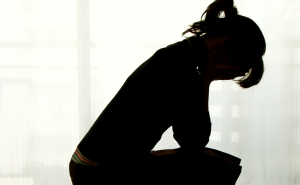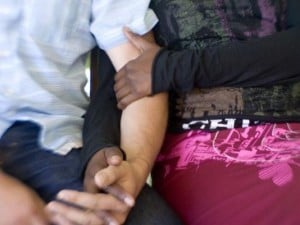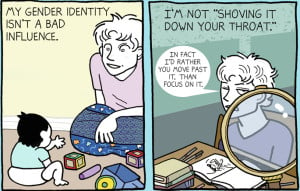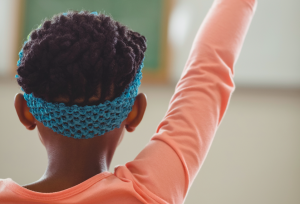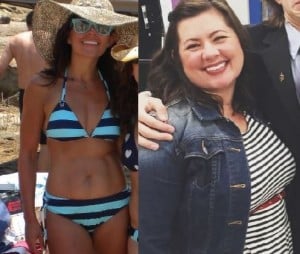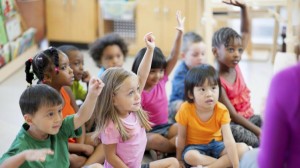
A group of children sit on the floor, several raising their hands. Source: Public House Watch
Talking about race is challenging for many parents, especially White parents.
There is a lot of fear and uncertainty about this topic – from worrying that by pointing out race we are contributing to racism, to believing that by ignoring race we are creating a “color-blind” and therefore more equal world; some simply don’t know how or where to start.
And we need to get over it.
As discussed in part one of this article, remaining silent on the topic of race isn’t helping our children, and it isn’t moving the needle any closer to equality. In fact, science shows that it may be doing the exact opposite.
Children experience race. They need our help to understand and contextualize it, to understand what it means, how it is used and misused, and how America’s current and historical racial constructs either benefit or harm them and their friends.
I think most parents have similar goals when it comes to how they want to raise their children to handle issues of race.
First, we want to raise children who judge and assess the individuals they meet based on behavior, likes and dislikes, commonalities, and values – not the color of their skin or the origin of their recent ancestors.
Second, we want to raise children who understand that their ability and willingness to see people as people is not universal. We want to raise them to see and to call out racism and bigotry in the world around them. We want them to refuse to accept it or give it a pass.
Last, we want to raise children who understand the difference between being a supportive ally and being a White Knight, and to see people not as others who need saving, but as equals who need friendship.
It turns out the best way to meet these goals is to have honest, in depth, and specific conversations about race with the children in our care.
Race is a tricky thing in America, and educating our youth about it is a process, but there are a few things everyone can do to make it better.
1. Recognize that children experience race and that they need help to understand and contextualize it.
2008 was a big year for racial awareness in my family.
It was the year my oldest, then in kindergarten, would point to every Black man on a magazine cover and shout, “Look, Mom, it’s Barack Obama!” and I would have to explain that no, that was actually Morgan Freeman or Denzel Washington or Jamie Foxx or Jay-Z. And no, that Black woman wasn’t Michelle Obama; it was Beyoncé or Halle Berry or Oprah.
2008 was also the year my children first heard “the n-word.”
It was the year I realized that I had to talk to my children about race because they were experiencing it and they had questions.
Make a conscious effort to observe the racial messages that surround us (in advertising, in television, on the radio, in books) and recognize that our kids are subject to these same messages. The difference is that they don’t have much context to frame those messages. So it’s our job to teach them.
2. Make a conscious effort to share books, movies, and other media with your children that present diverse viewpoints and story lines.
It isn’t enough to say that all people are equal; children believe what they see more than they believe what they hear.
My daughter recently asked me why so many athletes were Black. She was surprised to learn that there are far more Black lawyers, doctors, and teachers than sports stars. She was also surprised to learn how many sports still aren’t very open to people of color – sports like NASCAR and hockey.
When I was growing up, the drug war was all the rage and almost every movie that featured Black and Latino people showed them living in ghettos. The men were drug-dealing thugs and the women were struggling single moms selling the only asset they had – their bodies – to make ends meet.
Neither of those tropes are true – not all Black men are athletes, and not all people of color live in ghettos, dealing drugs, sex, and violence.
But if those are the only stories we see and hear, we will begin to believe they are true.
If we don’t pay attention to the media we bring home, we are likely to continue reinforcing dangerous stereotypes or white-washing the world.
We have to intentionally and diligently bring in other stories that show multiple facets of various races, ethnicities, and identities.
One of my favorite books for young children is Amazing Grace by Mary Hoffman, which invites the reader to reimagine Peter Pan as a Black girl! Try introducing the children in your life to a similarly diverse story. It can go a long way in helping them imagine people of color more complexly.
3. Take advantage of every opportunity to talk about race in America.
I made my daughter cry this morning. No, I didn’t poke her with a stick. We were just talking, and I told her some of the history they aren’t teaching at school.
The conversation started innocently enough.
“Mom, did you know that before the first Thanksgiving, the Native Americans and the Colonists hated each other?”
“Well, I think they feared each other, but that often grows into hate. Yeah.”
She was silent then and I realized that she thought what many of us thought at that age: that Thanksgiving was the Disney-style happy ending to the founding of America. Everyone came together, shared food, and we all lived happily ever after. The end.
As a Historian and social justice advocate, that image didn’t sit well with me.
“Do you know what happened after the first Thanksgiving?”
“No, what?”
“Everyone went back to fearing each other and fighting. Since the colonists had guns and new diseases and other weapons, they used those to kill and enslave the Native Americans and take their land.”
I looked up and saw that my daughter was crying.
“We killed them all?”
“No, baby, not all of them. But we killed a lot of them. And we forced the ones we didn’t kill off their land and made them live on reservations. And we took a lot of their children to try to force them to assimilate to our culture and abandon their own.”
“But why?”
“Because we wanted their land. Because we were scared that if we left them alone, they would hurt us or kill us. Fear makes people do bad things.”
We’ve had similar conversations about the Civil War, the Civil Rights Act, Women’s Suffrage, same-sex marriage, and other “happy endings” throughout American History that were really just beginnings.
When an opportunity to discuss racism presents itself, do not let it slip by.
Even if the messages aren’t being taught in school, your child is still learning them — unless you teach them differently.
4. Address your privilege and the ways you benefit from institutionalized racism, but also the ways it can allow you to challenge the system.
After this conversation about Native American oppression, my daughter said this: “I wish I wasn’t White. Then I wouldn’t have to feel guilty about everything we’ve done.”
I felt what she was saying – and I suddenly understood why so many of my White friends were scared of having these conversations with their children.
We all have a racial identity and a racial history.
For people of color, that history comes with the heavy burden of oppression. My racial history comes loaded with privilege – but with privilege, as with power, comes great responsibility.
“I hear what you’re saying, but I want you to think about that. Because you are White, you have a special opportunity to make things better now. You have a voice that will ring louder than some other people’s. You have the power to call out other White people when they are being racist. You have the ability to help people be treated fairly. You have the power to create change and to be an ally.”
Teach your children that their privilege can be a powerful tool for creating change, as long as they use it carefully.
5. Teach your children to be “upstanders” to their peers.
Last year, my youngest told us about a friend who believed that God hated Black people. I asked her what she had said to her friend.
“I asked her why God would create everyone and then decide to hate some of them.”
“And what did your friend say?”
“She just said it was in the Bible.”
I could have left it at that, or talked about how some people believe different things and we have to respect their beliefs, but that would have made me complicit in racism. And it would have taught my daughter that it was okay to ignore and tolerate racism in her peers.
So instead we went online to find out what the Bible says about race and found some passages my daughter could share with her friend that would gently challenge her understanding of God’s judgment and hopefully make room in this girl’s heart for people of all races.
6. Be careful not to paint people of color as lost and persecuted souls looking for a White Knight!
Sometimes in our effort to educate, we focus on the more difficult issues that people of color often face. And while it is true that statistically people of color face more poverty, worse education, increased incarceration, and other hardships, it is not true that all they need is a benevolent White person to come save them from their life.
Being a good ally doesn’t mean always rushing in to save the day.
Being a good ally means being a supportive friend, listening to and respecting the voices of people of color, supporting their efforts to make their own lives better, and helping to create safe spaces where they can speak for themselves rather than stepping in and speaking for them.
My daughter came home upset last year because one of her Latina friends was having a hard time in school. My daughter wanted to help her, but didn’t know how.
I listened to what was happening and suggested that this was something that the girl needed to take care of on her own.
“You know how we tell you not to speak for your sister because she has words and she can speak for herself? I think this is similar.”
“Yeah, but Mom, she doesn’t know how. She doesn’t know who to go to for help or how to ask.”
I reminded my daughter of a situation with her younger sister the previous year and how we had all spend a weekend role-playing with her to let her practice using her words and her voice, to give her the power to change what was happening.
“Maybe you can do that with this friend at recess? Could you talk to her and brainstorm together and maybe even role play a little so she can practice?”
My daughter and her friend role played all recess long, and then my daughter walked with her friend to the counselor’s office and offered to stand outside the door in case her friend needed back-up, but mostly just to let her know she wasn’t alone.
Knowing she had a friend on the other side of the door, an ally who had her back, gave my daughter’s friend the courage she needed to trust this adult, tell him what was going on, and ask for help. It also helped give her the confidence and skills she needed to reach out to other adults who could help.
Teach your children that being an ally does not mean dragging their marginalized peers into situations where they don’t feel safe; it means supporting them in creating situations that do feel safe.
***
Race is still a tricky issue in America. For all our efforts, we are not yet living in a “color-blind” or “post-racial” world.
It is important for parents of all races to talk about the racial history of America and the ways that history still affects our present reality. For most parents of color, discussions of race and how race affect their lives are not a luxury, but a necessity.
If White parents truly want to help bend the arc of history closer to justice, we need to stop treating it as a luxury. We need to call out racial inequalities and help our children to see and challenge racial injustices.
Only by being open and honest and by actively challenging stereotypes can we help our children understand the racial messages they see all around them and put them into a context that will help them become allies for justice.
[do_widget id=’text-101′]
Bree Ervin is a feminist writer, political commentator and book reviewer at Think Banned Thoughts. Her proudest achievement is being the co-parent of two up and coming rabble rousers and remarkable young “upstanders” who are already working for social justice. Bree has a degree in history with a focus on comparative religion which she uses to dismantle the idea that patriarchy is the natural order and to poke holes in cultural ideas of static gender and sex-based binaries. She recently became a certified sexual health instructor and is debating whether she should go back to school to become an abortion provider, or become a politician in order to turn back the tide of reproductive restrictions sweeping the nation. When she’s not suited up in her ranty pants writing stories to inspire change, you can find her climbing mountains or stirring up smiles in the kitchen. You can follow her on twitter @thinkbanned or on Facebook/bannedthoughts.
Search our 3000+ articles!
Read our articles about:
Our online racial justice training
Used by hundreds of universities, non-profits, and businesses.
Click to learn more








